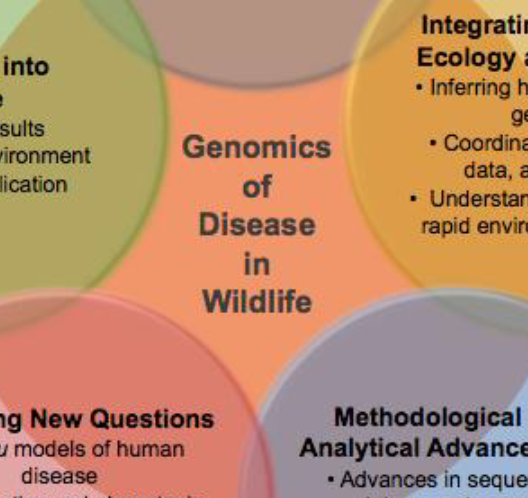Abstract
The outbreak and transmission of disease-causing pathogens are contributing to the unprecedented rate of biodiversity decline. Recent advances in genomics have coalesced into powerful tools to monitor, detect, and reconstruct the role of pathogens impacting wildlife populations. Wildlife researchers are thus uniquely positioned to merge ecological and evolutionary studies with genomic technologies to exploit unprecedented ‘Big Data’ tools in disease research; however, many researchers lack the training and expertise required to use these computationally intensive methodologies. To address this disparity, the inaugural ‘Genomics of Disease in Wildlife’ workshop assembled early to mid-career professionals with expertise across scientific disciplines (e.g., genomics, wildlife biology, veterinary sciences, and conservation management) for training in the application of genomic tools to wildlife disease research. A horizon scanning-like exercise, an activity to identify forthcoming trends and challenges, performed by the workshop participants identified and discussed five themes considered to be the most pressing to the application of genomics in wildlife disease research: i) “Improving Communication”, ii) “Methodological and Analytical Advancements”, iii) “Translation into Practice”, iv) “Integrating Landscape Ecology and Genomics”, and v) “Emerging New Questions”. Wide-ranging solutions from the horizon scan were international in scope, itemized both deficiencies and strengths in wildlife genomic initiatives, promoted the use of genomic technologies to unite wildlife and human disease research, and advocated best practices for optimal use of genomic tools in wildlife disease projects. The results offer a glimpse of the potential revolution in human and wildlife disease research possible through multi-disciplinary collaborations at local, regional, and global scales.
